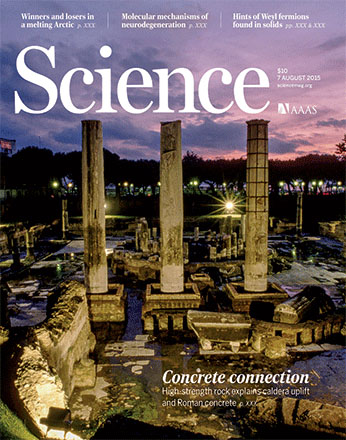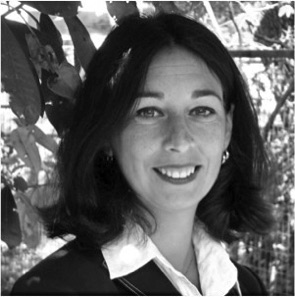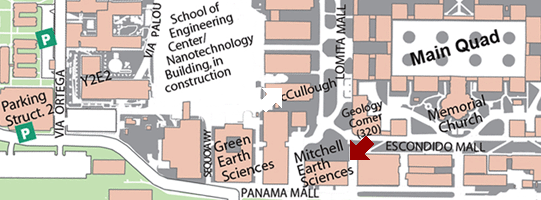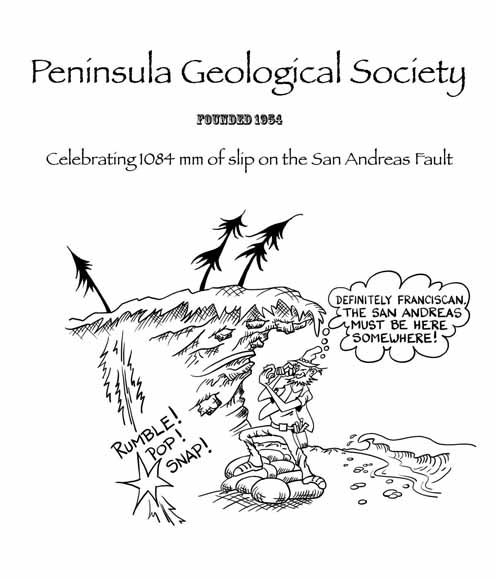
Presents
Location: Stanford University
Anyone wishing to attend the lecture only is welcome at no cost.
This will be the 458th meeting since 1954
Tiziana recently published a paper in Science on this topic doi:10.1126/science.aab1292
View the video released with the Science paper.

Ruins of the Serapeo market in Pozzuoli, Italy [Ressmeyer photo]
Volcanic-hydrothermal regions exhibiting exceptionally large uplifts and relatively low seismic efficiency (i.e., delay in releasing strain) pose an interesting rock physics question of how rocks are capable of accommodating such deformation without immediately releasing the stored energy through rock fracturing or cracking. What is the rheological scenario that connects these observations?
I will present the case of the Campi Flegrei caldera in Italy, a region experiencing notable uplift episodes (~2 m). Textural, mineralogical, and rock physics analysis of well cores provided evidence for pozzolanic-lime activity in the subsurface: a natural process reflecting that characterizing the cementitious pastes in modern and Roman concrete. The formation of fibrous minerals by intertwining filaments confers shear and tensile strength to the caprock, contributing to its ductility and increased resistance to fracture.

Tiziana Vanorio
Tiziana leads the Stanford Rock Physics Laboratory (SRPL) where she studies the effect of rock-fluid interactions on rock properties. Her group uses reactive flow experiments under stress conditions, multi-scale imaging, and simulations to understand the effects on geophysical parameters of the wide spectrum of changes that a rock experiences as a result of coupled thermo-chemo-mechanical processes.
Reservations: The preferred way to make reservations is simply to email Mike Diggles at mike@diggles.com by March 6, tell him you will attend, commit to pay, and bring your payment to the meeting. Mike always emails a confirmation; if you don’t get one, assume email crashed yet again and email him a second time. A check made to “PGS” is preferred, payable at the meeting.
If you want to pay in advance:
Everyone (including Stanford folks now) Please make dinner reservations by March 6. Contact Mike Diggles, at (650) 329-5404. Send check made out to “PGS” to Mike.
Dinner and the social hour is $35.00; this includes $1 that we use to help pay for students who are only $8.00 (also partially subsidized thanks to the School of Earth Sciences, Stanford University (Note, no-show reservations owe the full price).
Doris, whose wonderful crew prepares our meals, asked that we let you know that people who are late RSVPing and people who show up without a reservation will be welcome but that they may be eating on paper plates with plastic utensils (food supply permitting).
Dues for Academic Year 2015–2016 ($10.00) should be sent to Mike Diggles, 345 Middlefield Road, MS-910, Menlo Park, CA 94025. Mike’s phone: (650) 329-5404.
Officers: Kevin Gill, President; Sarah Nagorsen, Vice President; Mike Diggles, Secretary-Treasurer; Elizabeth Miller, PGS Stanford University Coordinator


PGS cartoon by Rick Blakely
Date created: February 25, 2016
Last modified: February 28, 2016
Created by: Mike Diggles, Webmaster-Secretary-Treasurer, PGS.